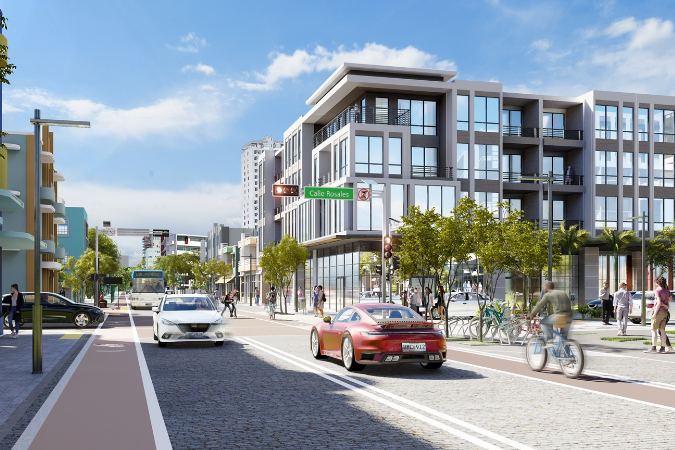5 Reasons Cities Should be Designed for Micromobility
Written By AD&V®ABOUT THE AUTHOR | AD&V® is dedicated to advanced and energy-efficient sustainable architecture & interior design that enhances people’s experience of the world and improves their lives.
THE RISE OF MICROMOBILITY SOLUTIONS HAS BECOME A DEFINING FEATURE OF MODERN CITIES WORLDWIDE.
Micromobility refers to the use of small, lightweight vehicles, such as bicycles, e-bikes, electric scooters, and other personal mobility devices, for short-distance travel. To fully harness the potential of micromobility, cities must be intentionally designed to accommodate these alternative forms of transit.
Since there’s a growing need for sustainable, efficient, and accessible urban mobility solutions, here are several reasons why cities should prioritize the design of their infrastructure with micromobility in mind:
1. ENCOURAGES ENVIRONMENTAL SUSTAINABILITY
The environmental impact of transportation cannot be overstated, with cars being a major contributor to air pollution and greenhouse gas emissions. Micromobility options, particularly electric ones, offer a cleaner alternative that can help improve air quality and reduce carbon emissions.
Cities designed with infrastructure tailored for micromobility, such as dedicated bike lanes and parking areas for scooters, encourage more people to choose eco-friendly modes of transportation, leading to cleaner air and a healthier urban environment.
2. REDUCES TRAFFIC CONGESTION
Traffic congestion is a problem in urban areas, contributing to wasted time, increased pollution, and heightened stress levels for commuters. Micromobility offers a way to alleviate congestion by providing alternatives to traditional car-centric transportation.
By integrating dedicated lanes and infrastructure for bicycles, scooters, and other small vehicles, cities can ease traffic flow and create a more efficient urban environment for all road users.
3. FOSTERS ACCESSIBILITY & EQUITY
Access to transportation is a fundamental aspect of urban life, yet many marginalized communities face barriers to mobility, such as limited access to public transit or affordable transportation options. Micromobility can potentially address these inequities by providing affordable and accessible transportation solutions.
However, to ensure equitable access, cities must design infrastructure that serves all residents, including those with disabilities or limited mobility. This means incorporating features such as curb ramps, accessible bike lanes, and designated parking areas for adaptive vehicles. Micromobility can foster a more inclusive and equitable urban landscape when done right.
4. PROMOTES HEALTHIER LIFESTYLES
Regular physical activity is essential for maintaining good health, yet many people lead sedentary lifestyles due to reliance on cars or public transportation. Micromobility presents an opportunity to incorporate physical activity into daily routines. Cycling or scooting to places reduces carbon footprint, promotes exercise, and improves cardiovascular health.
By designing cities with safe and accessible bike lanes, sidewalks, and shared micromobility infrastructure, policymakers can encourage residents to embrace active transportation options, leading to healthier communities.
5. STIMULATES ECONOMIC GROWTH
Investing in micromobility infrastructure can stimulate economic growth and create job opportunities within local communities. From bike-sharing programs to scooter maintenance services, the micromobility industry offers a range of entrepreneurial ventures that contribute to urban prosperity.
Additionally, vibrant streetscapes and pedestrian-friendly environments facilitated by micromobility infrastructure can attract businesses and tourism, further bolstering cities' economic vitality.
REIMAGINING URBAN LANDSCAPES
Integrating micromobility into urban planning is a necessary evolution in how cities are designed and operated. As we face global challenges such as climate change and urbanization, we must reimagine our transportation networks to be more sustainable, efficient, and accessible. By investing in micromobility infrastructure, cities can create more livable, resilient, and inclusive communities for future generations.



